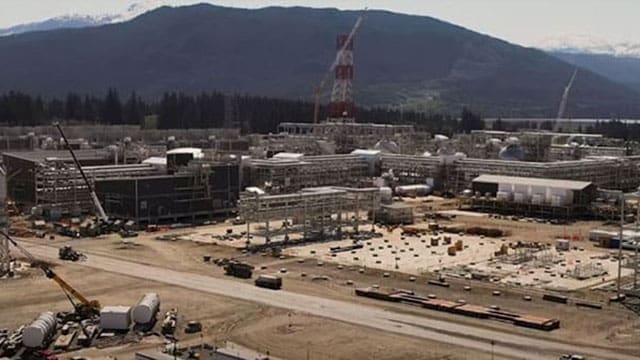Investment in LNG needs to rise by $400 billion over the next decade
 An additional $400 billion investment in liquefied natural gas (LNG) projects around the world is needed over the next decade to ensure energy security and achieve emissions reductions, according to a new report by Wood Mackenzie.
An additional $400 billion investment in liquefied natural gas (LNG) projects around the world is needed over the next decade to ensure energy security and achieve emissions reductions, according to a new report by Wood Mackenzie.
Without increased LNG supply, it said Asian countries, in particular, will continue to rely on high-emitting coal as they grow power generation.
“On a global scale, limited supplies of LNG risks stalling progress towards 2050 net zero targets in the near term,” according to the report by Wood Mackenzie and Petronas, one of the joint venture owners of the LNG Canada project.
The fallout from Russia’s invasion of Ukraine rerouted LNG shipments from Asia to Europe, contributing to record coal consumption in 2022, analysts noted.
“A key pillar of the energy transition is to reduce the consumption of coal. A critical step in that transition is to shift power production from coal to much lower-emissions gas. The shift helps drive immediate decarbonization while renewables, energy storage, and other clean energy technologies scale up.”
Power generation from natural gas reduces emissions by half on average, according to the International Energy Agency (IEA). LNG from Canada can deliver an even bigger decrease, reducing emissions by up to 62 percent, according to a 2020 study published in the Journal for Cleaner Production.
Global natural gas use is rising, driving increased demand for LNG. The U.S. Energy Information Administration’s latest outlook projects natural gas consumption will increase to 197 quadrillion BTU in 2050, up from 153 quadrillion BTU in 2022.
“Gas can be used to not only replace coal for power generation, but also to provide fuel for blue hydrogen production, and as an essential source of flexibility as electricity grids incorporate increasingly large amounts of intermittent renewable generation,” according to Wood Mackenzie.
“Gas also plays a critical role in non-power sectors such as commercial and residential heating, as a feedstock for chemicals and fertilizers, and as an energy source for metals, cement, and other manufacturing processes.”
Canadian LNG has advantages in a lower-emission world, the report said.
“Canada’s western ports are ideally positioned to supply growing Asian demand because its shipping routes aren’t dependent on an uncongested Panama Canal. The country is also poised to produce some of the lowest-emission LNG in the world,” Wood Mackenzie said.
The low emissions per tonne of LNG in Canada come from shorter shipping distances to customers, a colder climate, the use of hydroelectricity, and methane emissions reduction from upstream natural gas production.
Once it starts operating in 2025, LNG Canada will have an emissions intensity of 0.15 percent CO2 per tonne, less than half the global average of 0.35 percent per tonne, according to Oxford Energy Institute.
The proposed Indigenous-led project Cedar LNG would have an emissions intensity of 0.08 percent, and smaller-scale Woodfibre LNG would have an emissions intensity of 0.04 percent.
“The gas and LNG supply and demand mismatch that spawned the current energy crisis and stalled energy transition progress can’t be repeated,” Wood Mackenzie said.
“This will require a long-term commitment to expanding capacity to ensure reliable, increasingly low-emission, and affordable LNG that won’t be upended by future geopolitical and economic disruptions.”
Deborah Jaremko is director of content for the Canadian Energy Centre, a Troy Media Editorial Content Provider Partner.
For interview requests, click here.
The opinions expressed by our columnists and contributors are theirs alone and do not inherently or expressly reflect the views of our publication.
© Troy Media
Troy Media is an editorial content provider to media outlets and its own hosted community news outlets across Canada.



